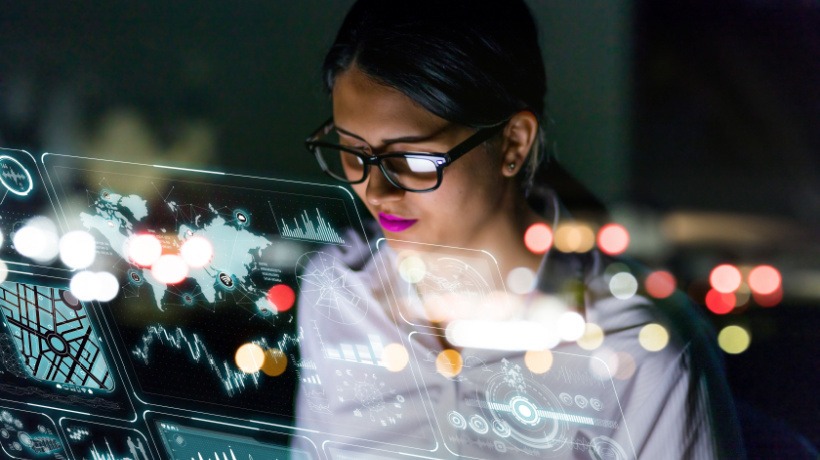Learning Evolution For An Evolving Future
In the past couple of years, the use of technology has expanded. We have seen some stunning revolutions, from smartphones to self-driving cars. One field that has seen especially significant growth is Artificial Intelligence (AI). The rise of AI has led to an evolution in Learning and Development paradigms, with a transition from passive to active learning. This article will focus on AI's impact on multimodal learning experiences and how it will shape the future of education.
What Is A Multimodal Learning Experience?
Multimodal learning is learning through multiple senses. The senses could be auditory, kinesthetic, visual, or a combination of these. With technology, multimodal learning in the education industry has become more popular and easy to accomplish. A multimodal learning experience could include videos, podcasts, Augmented Reality (AR), Virtual Reality (VR), games, simulations, and interactive multimedia presentations.
Impact Of AI On Multimodal Learning Experience
AI has brought a paradigm shift to education by making learning personalized, adaptive, and accessible. Artificial Intelligence could be utilized in multiple ways to enhance multimodal learning experiences. For instance, virtual tutors or chatbots can provide one-to-one format tutoring targeted to the learner's needs, on demand. AI could also be utilized to personalize learning experiences and adapt them to the learner's pace, goals, knowledge levels, and style. AI technology can personalize learning and increase engagement by tailoring content delivery to an individual rather than just providing a one-size-fits-all approach.
AI-Powered Multimodal Learning Experience
With an explosion of online content, multimodal learning experiences harness the power of AI to create content relevant and tailored to individual learning needs. AI systems can utilize intelligent algorithms to assess a learner's level, suggest learning strategies, check for knowledge gaps, and suggest appropriate learning content. AI-powered telepresence robots blend the boundaries of digital and physical spaces, allowing remote participants to navigate and interact with learning resources in real time. AI-powered chatbots can provide guidance, assistance, and answer questions about the content.
The Importance Of Collaborative Learning In Multimodal Learning
Collaborative learning is when learners work together on a problem to produce a solution or understand a concept. With AI's integration into multimodal learning experiences, collaborative learning becomes more achievable. Learning platforms equipped with AI technologies can connect learners through global networks, providing opportunities to exchange ideas and encourage community building. AI solutions can track active participation in collaborative engagements and identify those who are not participating, encouraging participation.
Connection And Assessment Of Learning With AI
AI can also assess learners' performance and provide them with assistance, feedback, and guidance as necessary. Ultimately, AI enables collaborative learning in multimodal learning experiences, so that learners can learn from one another and build a deeper understanding of the content.
By connecting learners through global networks, AI can help bridge cultural boundaries and create a more diverse learning environment. This technology can also enable real-time analysis of learner behavior, giving instructors insight into how their learners interact with the material and how they might improve it.
AI technologies enable automated grading of assessments, providing real-time feedback to learners as they progress through the course material. AI-driven analytics can identify student performance patterns and offer deeper insights into the learning process. This feedback can create tailored instructional strategies, helping learners progress more efficiently.
Curriculum Development And Augmentation With AI
Moreover, AI-based solutions are being leveraged to support curriculum development. By analyzing learner data from previous courses, AI-driven tools can suggest the most compelling topics or resources that will help ensure student success in future classes. AI-driven assessment tools and analytics can also help instructors personalize learning experiences to a greater degree, enabling them to create course material tailored to each student's individual needs and strengths. AI technology can drive improved learner engagement, profound insights into educational data, and effective curriculum development initiatives.
Conclusion
Technology trends drive Learning and Development, and with AI rapidly transforming the training landscape, people can expect a more personalized, flexible, and multimodal learning experience. Intelligent, interactive tools can help learners navigate and engage with their learning material optimally, ensuring a practical learning experience. Moreover, using AI in collaborative learning could foster problem-solving, critical thinking, group learning, and soft skills (like communication and teamwork). Alongside this, AI-powered multimodal learning gives learners the control to master information in their own way, aligned with their personal preferences and styles. It is indeed a transformation that holds vast potential for the future of learning.









